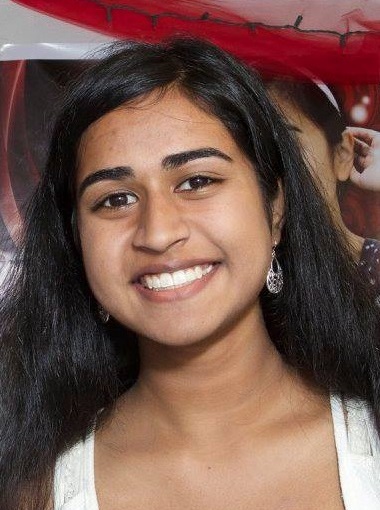Grace Johnson

My research project involves looking at what genes lead to certain petal spot patterns in the common monkeyflower. I also look at how these spots may give a plant an advantage when it comes to getting pollinated and passing on their genes. My time is largely divided between molecular work in the lab and more hands-on work in the greenhouse, where I cross plants, collect seeds, and track plant growth and germination.
Carmel Malvar

This summer, I will be working on investigating the structure and molecular determinants of the Dengue Virus NS1 protein. Dengue Virus affects hundreds of millions of patients annually and can lead to symptoms such as hemorrhagic fever or shock syndrome. My work will be building on our findings in lab from the past year regarding key amino acid sites on NS1’s role in compromising endothelial permeability and I am hoping to create new mutant proteins to help further our investigation.
Kristy Dang
I work in the CognAc lab, which focuses on how people select, plan, and perform movements. My goal this summer is to explore how attention affects the way subjects implicitly (unconsciously) adapt when their motor movements are perturbed. I want to determine the relationship between explicit focus and implicit learning. By studying how people learn motor movements, we hope to further understand neurological disorders and improve rehabilitation methods for patients.
Niathi Kona

I will work mostly on two projects, linked by the common theme of controlling myopia (the focus of the Wildsoet Lab). One of my projects will involve guinea pigs as an animal model for myopia and will explore the influence of dosing on the effectiveness of atropine eye drops for slowing or preventing the development of myopia. The second project will involve human subjects and a study of anterior ocular changes induced by a specialized contact lens for myopia control.
Dvir Reif

I have been working in the Nogales lab since Summer 2016 through this academic year through URAP, working with a postdoctoral fellow (Vignesh Kasinath) and another undergraduate (Ashlee Feng) in the Nogales lab. My work in the Nogales lab is focused on understanding the structure and function of Polycomb Repressive Complex 2 (PRC2). So far we have been successful not just in the biochemical characterization which involves molecular cloning and protein purification, but also in preliminary electron microscopy studies (Negative stain and Cryo-EM). We have found conclusive evidence for the […]
Samuel Bright-Thonney

Prof. Shapiro is an experimental particle physicist and a leader of the Lawrence Berkeley National Laboratory affiliated collider experiment known as: ATLAS collaboration at the CERN Large Hadron Collider (LHC). One of the most important pieces of the ATLAS research program is to search for new phenomena and interactions never before observed at the most basic level of nature. One class of theory that predicts such interactions is “Supersymmetry.” Samuel is working on the search for Supersymmetry in a special class of models where some of the Supersymmetric particles can […]
Shannon Zheng

As an undergraduate research apprentice, I transcribe interviews in a qualitative Sociological study. After transcribing, I help code and organize data. Given my exposure to the data, I then have the opportunity to author analytic memos, seeking relationships between past scholarship and current data.
Vivek Raghuram

Prof. Feldman is leading the ECG2 project, a “Natural Language Understanding” system. Vivek is currently working with him on two projects, one to apply the natural language understanding system to control strategy video gaming, and another to build a healthcare-related question and answer system. This summer, Vivek wrote and submitted a paper to a conference about strategy video game control. He also made progress setting up the system for the healthcare project.
Nikhil Athreya

The project involved convex optimization and GPU programming to speed up neuronal simulations. Essentially, given the description of a neuron and/or a neuronal network, the project aims to translate this high level description into something that can be run on a GPU. GPU-bound simulations are on the order of 1000’s of times faster than CPU-bound simulations. This summer, I worked on porting these simulations to Python, where they can be more easily accessed by programmers and streamlining the efficiency of the modeling program.
Christian Ramiro

Our project’s overarching focus is to detect changes in how we use our lexicon to convey meaning. A previous project touched heavily on how meaning “evolves” for a word over the whole course of its existence (up to Old English!). This summer we are looking into how word meaning changes or transfers during the development of children.